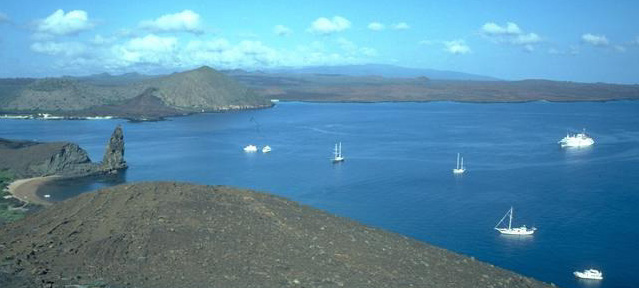

|
"A riddle, wrapped in a mystery, inside an enigma" |
|
This famous quote by Winston Churchill certainly applies to the questions surrounding the way that remote islands are populated by animals and plants from afar and the forces that lead to the evolution of unique and endemic species once they reach islands. Perhaps no other place on Earth evokes the same emotions in biologists, geologists, or naturalists or just plain folks, as the Galápagos Islands. The rich history of discovery begun by Charles Darwin in the early 1800's continues today in the ongoing investigations on these unique communities and biota. The isolation which these islands afford their occupants leads to obvious questions concerning how the islands were formed and how life reached the islands. Selecting the buttons below will allow access to detailed information on Nolana galapagensis. Another, the Nolana/Outgroups button provides images of potential outgroup taxa, Lycium and Grabowskia in several environments within the islands. The Galápagos Links button provides some additional reading resources and general information for the islands. And, the Genetic Diversity Proposal details the proposed study of Nolana galapagensis populations. |
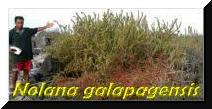 |
 |

|

|
A few facts about the Galápagos Islands |
|
The Galápagos Islands lie approximately 600 miles ( 960 kms) west of mainland Ecuador, directly stradling the equator: 1°40' N -1°40' S latitude, 89°14'-92°01' W longitude. The island chain has over 45 named volcanic islands but only 13 major islands and 103 smaller islands not much larger than rocks. Most islands have two names, one in Spanish and another in English. The Spanish names are preferable to the Ecuadorians, but some islands have two or more Spanish names, for example, Floreana, Isla Santa María, and Charles all refer to the same island. |
|
Map Source: http://www.geo.cornell.edu/geology/GalapagosWWW/GalapagosMap.html
|
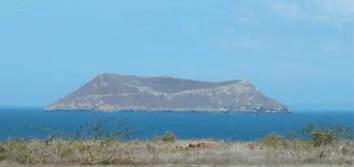 ~ ~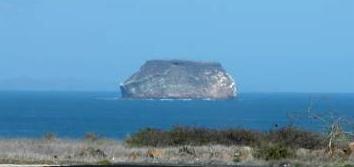 |
| Daphne Major ~ ~ ~ ~ ~ ~ ~ ~ ~ ~ ~ ~ Daphne Minor |
|
The climate is usually warm and with precipitation from January through June and cooler and drier from July to December (garúa). In July you can usually count on prevailing winds from the southeast and the seas are often choppy. During El Niño events, the climate is influenced by the associated warm water currents that greatly increase clouds and rainfall. In the El Niño of 1982-83, it rained in the Islands for nearly 9 months. December - June daytime temps at ca. 84°F (29°C). July - November with fog but little rain, daytime temps reach 66°F (19°C). Rainfall is usually less than 750 mm per year; however, El Niño events can raise yearly totals to over 1500 mm. |
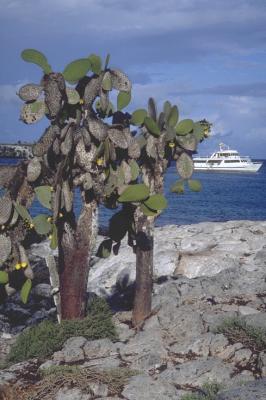 Opuntia echios (Cactaceae) |
Three genera of Cactaceae are found on the islands. Brachycereus (1 species) and Jasminocereus (1 species with 3 varieties) are endemic, and Opuntia with 6 endemic species. |
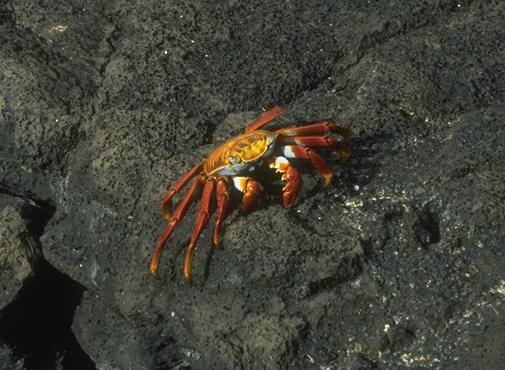
Sally Lightfoot crab on lava |
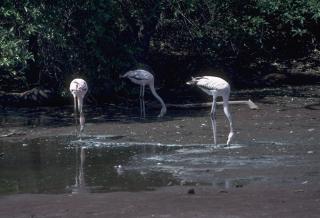
Flamingos feeding in brackish lagoons |
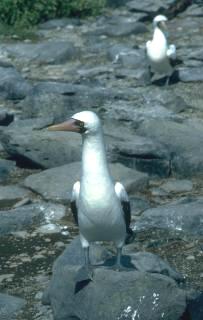
Masked Boobies 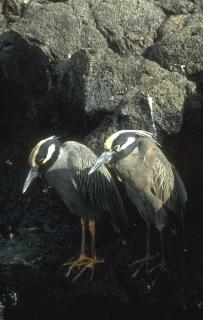
Night Herons |
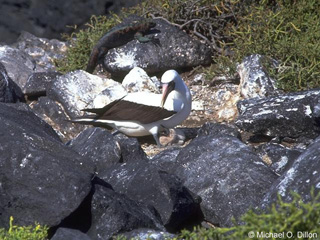
A mother Masked Boobie tends her young chick
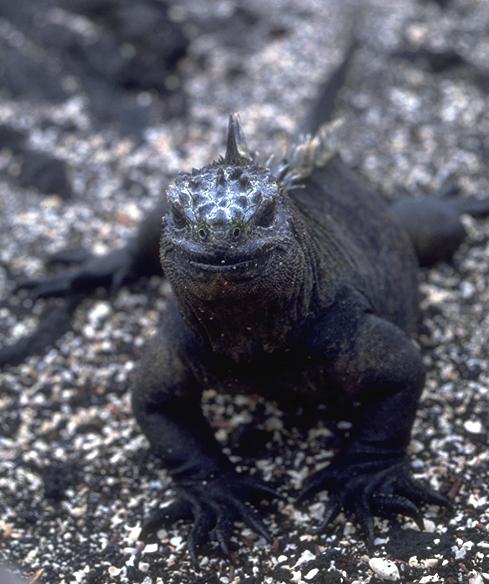 Rather handsome Marine Iguana
Rather handsome Marine Iguana |
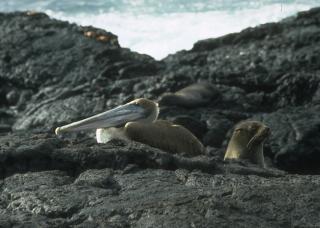 Pelicans and sea lions
Pelicans and sea lions |
 Swallowtail Gull
Swallowtail Gull |
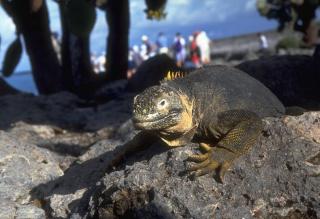
Land Iguana on Plaza Sur |
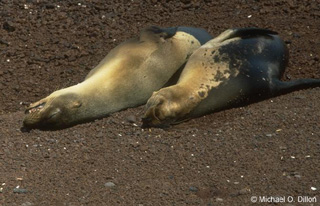 Sea Lions sleeping on a warm beach
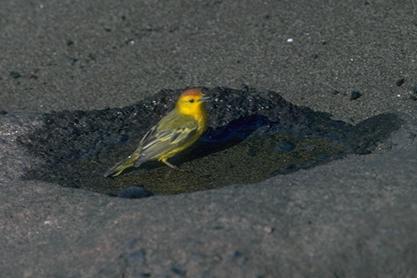
Yellow Warbler |
| Introduced animals are always dangerous on islands. The species, both plant and animals, that have evolved without predators are suddenly attacked by such animals as the house rat, house mouse, goats, cattle, burros, pigs, dogs, cats. | 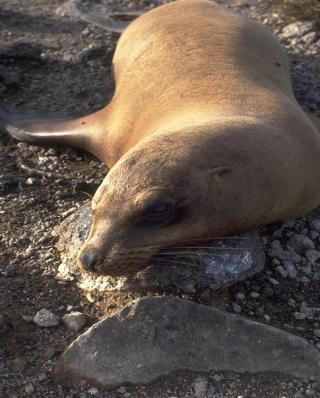 |